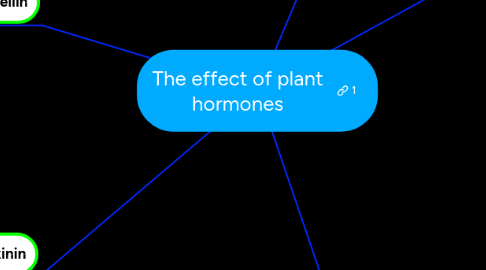
1. Gibberellin
1.1. The effect of gibberellin on plant
1.1.1. Initiates plant growth
1.1.2. Triggers germination in dormant seeds
1.1.3. Causes stem elongation by promoting cell elongation and cell division
1.2. The cost of gibberellin
1.2.1. Gibberellic acid (GA3)
1.2.1.1. Gibberellic Acid Solution
1.2.1.1.1. (13.0 Mg/ML)
1.2.1.1.2. (1.0 Mg/ML)
1.2.1.2. Solid
1.2.1.2.1. 1 g ($74.18 ex. GST)
1.2.1.2.2. 5 g ($236.72 ex. GST)
1.2.1.2.3. 100 g ($2,362.03 ex. GST)
1.2.2. Gibberellins A4 + A7
1.2.2.1. 1 g ($107.85 ex. GST)
2. Cytokinin
2.1. The effect on plant
2.1.1. Promote cell division
2.1.2. Promotes secondary growth
2.1.3. Control the rate of branching by a plant
2.1.4. stimulating the growth of fruit
2.1.5. A
2.1.5.1. Ensure roots and shoots to grow at equal rates
3. Auxin
3.1. The effect of Auxin on plant
3.1.1. Stimulating shoot elongation
3.1.2. Controlling seedling orientation
3.1.3. stimulating root branching
3.1.4. Promote fruit development
3.1.5. Inhibit ripening
3.2. The cost of Auxins
3.2.1. IAA (Indole 3 Acetic Acid)
3.2.1.1. Liquid
3.2.1.1.1. 100 mL ($35.56 ex.GST)
3.2.1.2. Powder
3.2.1.2.1. 5 g ($35.56 ex. GST)
3.2.1.2.2. 25 g ($89.66 ex. GST)
3.2.1.2.3. 100 g ($327.09 ex. GST)
3.2.2. Indole 3 Butyric Acid (Rootex)
3.2.2.1. Rootex - P 18 g ($ 5.50)
3.2.2.2. Rootex - G 50 ml ($10.00)
3.2.2.3. Rootex - L 50 ml ($7.50)
4. Abscisic acid
4.1. The effect of abscisic acid on plant
4.1.1. Promotes the death of leaves
4.1.2. Seed dormancy
4.1.3. Controls the closing of stomata
4.1.4. Regulates water loss
4.2. The price of abscisic acid
4.2.1. Solid
4.2.1.1. 100 mg ($ 89.25 ex. GST)
4.2.1.2. 500 mg ($342.30 ex. GST)
4.2.1.3. 1 g ($524.12 ex. GST)
4.2.1.4. 5 g ($2,427.94 ex. GST)
5. Ethylene
5.1. Plant that has ethylene as hormone
5.1.1. climacteric fruit - generate large amount of ethylene as ripening proceeds
5.1.1.1. apple
5.1.1.2. apricot
5.1.1.3. papaya
5.1.1.4. mango
5.1.1.5. kiwi
5.1.1.6. banana
5.1.1.7. avocado
5.1.2. Non-climacteric - little ethylene production
5.1.2.1. cherry
5.1.2.2. cucumber
5.1.2.3. grape
5.1.2.4. lemons
5.1.2.5. pineapple
5.1.2.6. strawberry
5.1.2.7. sweet orange
5.1.2.8. tamarillo (tree tomato)
5.2. The effect of ethylene on plant
5.2.1. Fruit ripening
5.2.2. Plumular hook formation in etiolated dicot seedlings
5.2.3. Triple response
5.2.3.1. inhibition of stem elongation
5.2.3.2. stimulation of radial swelling of stems
5.2.3.3. Horizontal growth of stems with respect to gravity
5.2.4. Formation of adventitious roots and root hairs are induced in plants
5.2.5. Inhibition of linear growth of roots of dicotyledonous plants
5.2.6. Inhibit flowering in plants
5.2.7. Enhance senescene of leaves and flowers in plants
5.2.8. Promotes the abscission of leaves in plants
